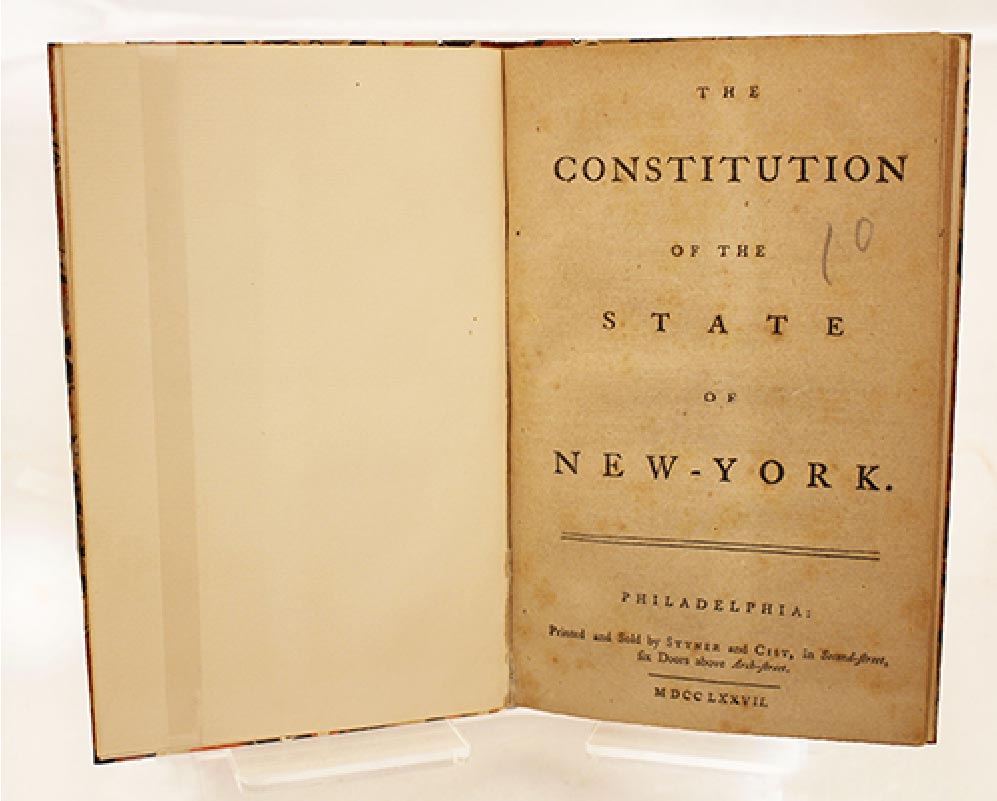Did you know that equal rights for women, let alone equality for the LGBTQ or disabled community, is not codified in the New York State constitution? And that New York State lacks an environmental bill of rights? Come November 2017, New Yorkers can vote to change that and much more.
A little known fact about the New York Constitution is that it can be amended through a referendum that takes place every twenty years. That means that the residents of New York State can vote to make changes to the constitution – and the next referendum is coming up on November 7th, 2017.
The New York State Constitution was written by the first “Convention of Representatives of the State of New-York” in 1777. The constitution was born in the Dutch stone home of merchant Abraham Van Gaasbeck in Kingston, in what is now the Senate House State Historic Site in Kingston and was approved in White Plains because New York’s representatives were on the run from the British, who had seized control of New York City. Given the haste and danger in which the constitution was written and the tremendous growth of the state, it’s no surprise that the document needed regular revisions in 1801, 1821, and 1846. By 1846, it became clear that the state needed a structure to regularly revise it, so this version of the constitution included an amendment to bring a referendum to the voters every twenty years on whether a constitutional convention should be held.
But incredibly, no new constitution has been adopted since 1894, over 120 years ago, though additional conventions have taken place in the last century and the amendments were made following the 1938 convention. As Morgan Pehme of Effective New York and New York People’s Convention tells Untapped Cities, it’s an unprecedented situation, the “longest stretch in New York State history that we haven’t had a new constitution. Each time, the convention dramatically changed our state, always for the more progressive.”
With so many changes and potential actions coming down from the federal government level following the inauguration of President Donald Trump, we’ve heard a common cry among readers and acquaintances: how can one make a difference on one’s own? While there is not much ordinary residents can do on the federal level, Pehme contends that “there really could not have a more fortuitous time for this to come to ballot in light of the insane overreach,” with clear reasons to “supercharge our protections and rights in our state constitution as a bulwark of defense…Come hell or high water, [the referendum] is on there this November.”
What is most interesting is how much power the residents of New York would have, once they vote to have a convention. The next step, in the 2018 elections, would be to elect delegates to the convention, who can be anybody – not just elected officials. It’s a four to six month time commitment in early 2019 for delegates, but the role would be paid at the same rate as other state legislators. There would be three delegates per Senate district – so with 63 Senate districts, there would be 189 delegates from across the state, and an additional 15 at-large delegates that would represent the entire state. Then amendments would put to public vote in the November 2019 elections. Even Governor Andrew Cuomo cannot have a say, as by nature of the convention the governor does not have any influence on it.
Compared to other progressive states, New York is also significantly late in the game. In the 1970s, eleven states placed state-wide equal rights amendments giving women equal rights. Pehme says that a convention and amendment to the constitution would “address some of the fundamental shortcomings of the constitution and adopt amendments that are in line with the best practice of other states.”
There are really no restrictions as to what can be put on the table at the Constitutional convention. Pehme says, “The sky is the limit in terms of what we can do.” The potential ideas in addition to equal rights for all and environmental rights could include single payer healthcare, mechanisms to encourage greater voter participation (including early voting, automatic registration, same day registration, making partisan gerrymandering illegal), ethics reform, term limits for the governor and other unlimited positions, criminal justice reform, reproductive rights, compelling the state to provide equal funding to poor districts (not the case currently), and right to higher education. Home rule for New York City and other large cities has been floated about, which would break their reliance on Albany for funding. In New York City, for example, the MTA and the New York City Housing Authority (NYCHA) are controlled at the state level, not by the mayor.
The challenge this year remains voter awareness, with low voter turnout in midterm elections and low awareness of the issue on the ballot. In 1997, the last time the convention was up for a vote, it was voted down, but with only 40% of voters actually voting on the question. And we’ve hopefully learned from the mistakes of the 1967 convention, in which seven amendments came out of the constitution but were unfortunately bundled together for voters on a single up or down vote. One amendment brought down the others.
Pehme remains hopeful of the potential of this mechanism in the state constitution: “We really feel like it’s a real moment we could bring about incredible changes that would make New York a policy leader [again]. The New Deal in the 1930s came out of New York, but we haven’t led the nation since then. We have branded it the People’s Convention, because it truly can be the People’s Convention. Anything and everything is on the table.”
Find out more at New York People’s Convention. Next, read more about how New York City works in our Cities 101 Column.






